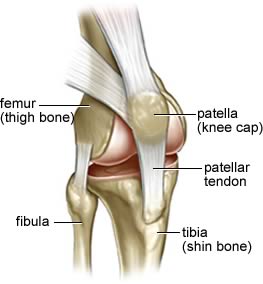
The Ligaments of the Knee
So what exactly is a ligament?
Within a joint there are 4 key structures that keep you moving:
- Bones – a joint is where 2 bones meet
- Cartilage – this is the squishy stuff on the end of bones, in the discs in your spine and in extra cushions like the meniscus. This stops the bones rubbing together
- Tendons – the rope like fibres that join muscles to bones
- Ligament – the fibrous connective tissue that joins the bones together in a joint
The ligaments of the knee
In the knee there are 4 key sets of ligaments
- The anterior cruciate ligament (ACL) connects the thigh bone to the shin bone at the knee.
- The posterior cruciate ligament (PCL) is the second set of ligaments connecting the thigh bone to the shin bone.
- The lateral collateral ligament (LCL) connects the thigh bone to the fibula, the smaller bone on the outside of the lower leg.
- The medial collateral ligament (MCL) also connects the thigh bone to the shin bone on the inside of the knee.
How does it happen?
Ligament injuries often happen during sport – sudden twisting, over extension, falls, a bad landing or sudden stops . . . these can all cause ligament injuries.
I get a fair few calls from skiers and snowboarders during the winter too as sometimes the ligaments can’t cope with those spectacular falls! (although you can try my ski exercises to help prevent it)
Speed is key
It is key to get a quick, accurate diagnosis. Ligaments are like ropes, so they can get frayed and loose before they snap completely. Just to be clear, snapping isn’t good. You’ll need a thorough, clinical, physical assessment though – X-Rays and MRI scans don’t show ligament damage very clearly so should never be the sole means of diagnosis.
Ligaments are typically slow to heal. They need lots of support while they are doing it as they don’t have a great blood supply so this means it takes time for the “good stuff” to get in. I’ve found that using Magnetic Resonance Therapy (MRT) can reduce recovery time to weeks as opposed to the usual months.
Supporting the knee correctly so that it places the least strain on the ligament while it is healing is also key. And will help to prevent future injuries. So a full video gait analysis is also part of the process, for prevention AND cure.

Leave a Reply